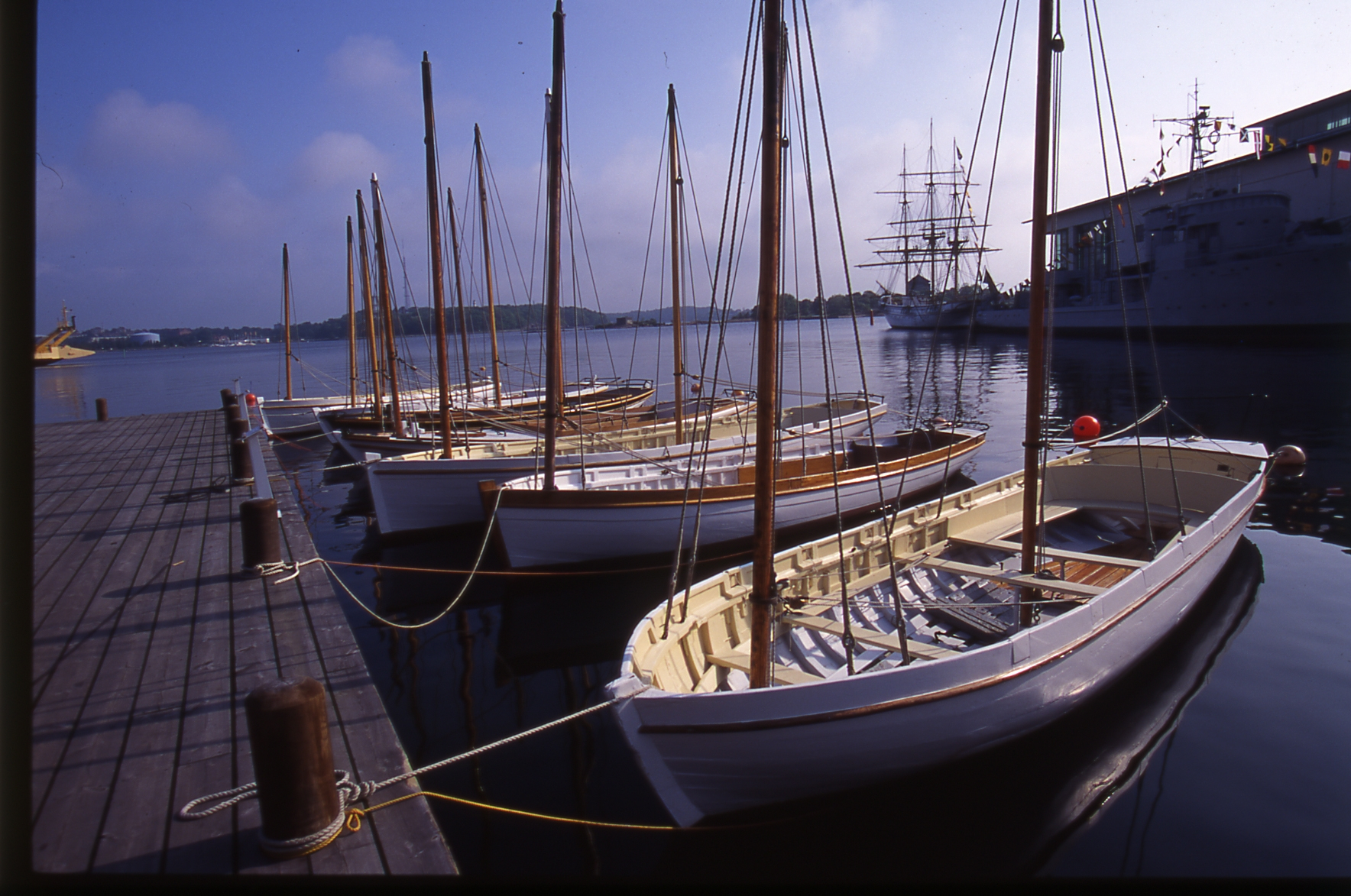
The Sloops
Every May, the sloops are launched into the waters outside the Naval Museum. These ten beautiful, white-painted, two-masted wooden boats began racing already in the 19th century and they still do today.
Among the bark boats are Biskopen (“The Bishop”) and Biskopinnan (“The Bishop’s Wife”), both built in 1843. They originally served as courier boats for the commanders at Drottningskär and Kungsholmen, two military fortresses located on islands in the Blekinge archipelago, tasked with defending the approaches to Karlskrona.
The remaining sloops were once part of the Swedish Navy’s largest vessels, used as lifeboats or for transporting crew and supplies. One of them, Falken (“The Falcon”), was built in 1830 when King Karl XIV Johan, the first Bernadotte on the Swedish throne, was still reigning. It may be the oldest boat in the world still used for competitive sailing.
150 Years of Racing Tradition
The sloops are owned by the Naval Museum but are sailed by Carlskrona Båt Eskader (CBE), founded in 1867, making it one of Sweden’s oldest sailing clubs. The squadron was started by naval officers who raced the bark boats but also used them for practicing sailing skills, naval signaling, and formation sailing (the optimal positioning of warships within a fleet).
Originally operated by the navy until the early 1990s, CBE is today an independent association open to everyone. In 1993, the navy donated the ten sloops to the Naval Museum. During the winter, the boats are maintained at the Sloop and Motor Launch Shed, a fascinating 18th-century building constructed specifically for storing the navy’s smaller boats. During the sailing season, the boats are moored at the quay below the shed.
From the second half of May through early September, the ten boats are raced. On Carlskrona Båt Eskader’s website, you can find excerpts from the official race rules, one of the most important being:
Good seamanship and gentlemanly conduct are more important than victory.
The races, initiated by a group of naval officers roughly 150 years ago, remain a vibrant and cherished part of Karlskrona’s maritime life today.

